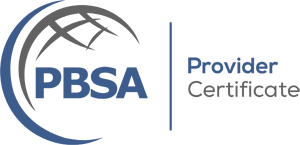Empowering Employers
As the business landscape evolves, so do the regulations and procedures that govern employment eligibility verification. The U.S. Citizenship and Immigration Services (USCIS) continues to refine the process to empower employers and streamline their responsibilities. One such development is the introduction of the new Form I-9 and modernized alternative verification procedures. In this article, we'll explore these changes and how they empower employers in the employment eligibility verification process.
The New Form I-9: A Closer Look
The Form I-9, Employment Eligibility Verification, is a crucial document that employers use to verify the identity and employment authorization of employees. In November 2022, USCIS released a new version of Form I-9 (edition date: 10/27/2022), featuring various updates designed to enhance usability and reduce errors. Here are some notable changes:
Enhanced Instructions: The new form provides more detailed instructions, making it easier for employers to complete the form accurately.
Improved Layout: The form's layout has been optimized for both paper and electronic completion, enhancing the user experience.
Revised Formatting: The formatting changes include clearer field descriptions and improved visuals for certain sections.
QR Code: The new form includes a QR code that employers can scan to validate the form's authenticity.
Simplified Lists of Acceptable Documents: The Lists of Acceptable Documents have been revised to improve clarity and align with USCIS policies.
Modernized Alternative Verification Procedures
In addition to the updated Form I-9, USCIS has introduced modernized alternative verification procedures that empower employers to verify employment eligibility in innovative ways. These procedures are designed to increase efficiency while maintaining the integrity of the verification process:
Virtual Review of Documents: Employers are now allowed to review Section 2 documents virtually, either in person or remotely, via video conference. The original documents must still be reviewed within three business days of the employee's start date.
Remote Verification for Remote Hires: If employees are hired remotely and will work exclusively in a location outside the company's physical premises, employers can designate an authorized representative to verify their identity and work authorization remotely.
Digital Signature and Storage: Employers have the option to digitally sign and store Form I-9 electronically, reducing paperwork and administrative burdens.
Benefits for Employers
These updates and modernized procedures offer several benefits that empower employers in the employment eligibility verification process:
Reduced Administrative Burden: The enhanced instructions, improved layout, and digital options streamline the process, reducing errors and administrative burdens.
Flexibility in Verification: The virtual review and remote verification options provide flexibility, especially for remote hires and employees working in distributed environments.
Enhanced Compliance: The updated form and procedures align with current USCIS policies, reducing the risk of non-compliance.
Improved User Experience: The new Form I-9's user-friendly design and clearer instructions enhance the experience for employers completing the form.
Digital Transformation: The option to electronically sign and store Form I-9 supports employers' digital transformation efforts.
Conclusion
The introduction of the new Form I-9 and modernized alternative verification procedures marks a significant step forward in the employment eligibility verification process. These updates empower employers with improved tools, clearer instructions, and flexible verification options, ultimately contributing to more efficient and compliant hiring practices. As employers adapt to changing work environments and technology advancements, these changes serve as a testament to the commitment to modernizing and enhancing the verification process for both employers and employees.

Blaine is the Co-Founder and COO of Western Verify, and spends his free time hosting parties or traveling with his amazing family.


